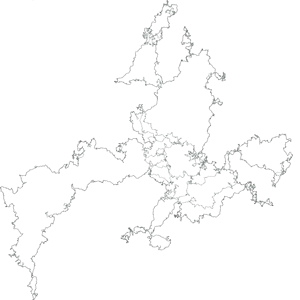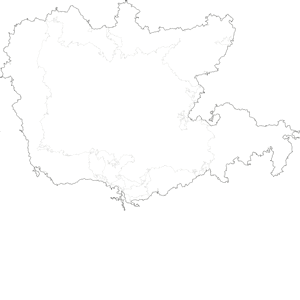
Introduction | A Continuum of Islands | More Islands
Some surprisingly simple processes can give rise to shapes that resemble natural features, such as coastlines.

Introduction | A Continuum of Islands | More Islands
Some surprisingly simple processes can give rise to shapes that resemble natural features, such as coastlines.
Brownian motion is a simple concept. A particle making random jumps traces
out a trail which, if one steps back, has structure on all scales - it is
a fractal. (Though a true fractal has structure down to infinitesimally small scales, a particle making finite jumps will approach a fractal if you "step back" and look at it from far away.)
Regular Brownian motion forms a special case where the steps taken by the
particle are all independent. (Many interactive demonstrations of regular Brownian motion are available.) This is part of a trail traced by a single brownian particle:

Fractional Brownian motion is produced when the steps taken by the particle
are correlated in time. One expresses this by saying
a parameter, the Hurst exponent H, is different from 1/2. The fractal dimension
of the path is equal to 1/H. When H > 1/2, the particle tends to keep moving
in the same direction it has been moving, producing smoother trails, as in
this example with H=0.7:

Lower H makes the trails more rough.When H < 1/2, the particle's motion
is anti-correlated: it will tend to move in a direction different from the
one it has been following. This produces trails which are very tangled:





